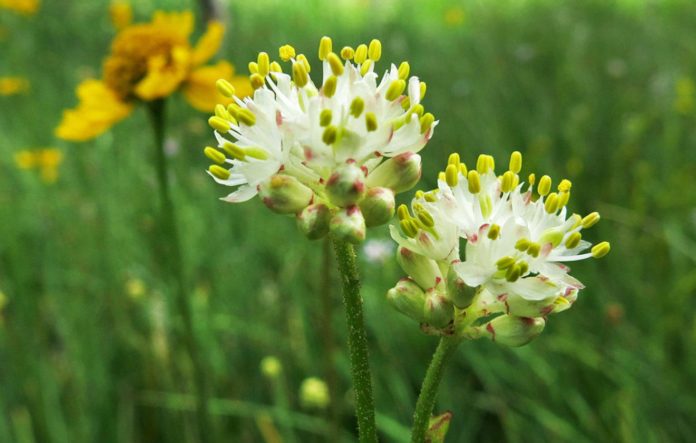The Venus fly trap, for example, waits year-round to snag flies with its jaw-like leaves. Insect-eating plants only catch insects when they flower, say scientists. The species may be one of many “cryptic carnivores” yet to be discovered.
There are about 800 plant species of carnivorous. Most are from the same tribe. Many species, like the Venus fly trap, use a snap trap, while others use sticky surfaces or lure prey into digestive fluid-filled chambers. In 2012, researchers discovered a species of carnivorous plant that catches tiny worms with underground leaves.
- Scientists in Fear of This New Predator From Red Sea Eating Native Species in Mediterranean
- Does This Mean We Stopped Being Animal and Started Being Human Due to ‘Copy Paste’ Errors?
- The One Lifestyle Choice That Could Reduce Your Heart Disease Risk By More Than 22%
- Aging: This Is What Happens Inside Your Body Right After Exercise
- Immune-Boosting Drink that Mimics Fasting to Reduce Fat – Scientists ‘Were Surprised’ By New Findings
The new study’s species, western false asphodel (Triantha occidentalis), is found in mountainous bogs and other nutrient-deficient habitats throughout western North America. Its flowering stalk is covered in small red hairs that exude a shimmering, sticky substance. Hairs in the droplets frequently trap flies and small beetles. However, many other types of plants do the same thing, employing these hairs as a defense mechanism against pests rather than as a source of nutrition.
Triantha’s carnivorous diet was discovered through a genomic study of plant evolution. Gregory Ross, a master’s student working in the laboratory of Sean Graham, a botanist at the University of British Columbia (UBC) in Vancouver, noticed that T. occidentalis lacks several genes found in carnivorous plants. (The genes regulate photosynthesis, for example, when plants are exposed to dappled sunlight.)
Qianshi Lin, then a Ph.D. student at the University of British Columbia, decided to investigate. He created a special diet for Triantha: fruit flies fed a rare isotope, or form, of nitrogen that could be used to determine whether the plants absorbed nutrients from the flies. Lin froze 150 mature flies. Then he and colleagues travelled to a bog near Vancouver, where they introduced fruit flies to ten individual Triantha plants and, as a control, to a similar-sized non-carnivorous plant.
The researchers returned the plants to the lab one to two weeks later. They detected the isotope of nitrogen in Triantha stems, leaves, and fruits, but not in noncarnivorous plants. Triantha obtained more than half of its nitrogen from prey, similar to sundews, a nearby carnivorous plant, the team reported in the National Academy of Sciences.
“That’s the point at which you prove that it’s a carnivorous plant,” Lin says.
“I felt quite excited to discover it.”
Additionally, he demonstrated that hairs produce the same enzyme, phosphatase, that other carnivorous plants use to extract phosphorus from prey.
Numerous carnivorous plants employ sticky hairs to snare flies and small beetles, but they locate these traps away from their flowers—eating a pollinating insect is pointless. Western false asphodel does not do this; instead, it grows these sticky hairs on the main stem that bears its flowers, which can reach a height of 80 centimetres. The authors believe that the red hairs and shiny droplets, similar to those found in sundews, attract insects. However, co-author Tom Givnish, a botanist at the University of Wisconsin, Madison, notes that the droplets are only sticky enough to trap small insects such as midges and not bees or other pollinators.
Andreas Fleischmann, a botanist at the Munich State Botanical Collection, is sceptical that Triantha is a true carnivore; he believes that it must be demonstrated unequivocally that the plant is luring insects to their deaths. He believes the hairs are more likely used to suffocate insects that might steal pollen or nectar from the flowers without fertilising them. Triantha, Fleischmann argues, is a more passive killer than an active one because its leaves are modified for trapping.
The findings imply that there may be additional examples of carnivorous plants that have gone unnoticed; the researchers discovered museum specimens of a related species with small insects attached to the flower stalk. Triantha, Lin explains, is a sporadic carnivore due to its brief flowering period. According to Aaron Ellison, an ecologist at Harvard University, there is only one other known instance of a part-time carnivorous plant: a vine in West Africa that consumes insects as a juvenile but then outgrows the habit.
There is another remarkable aspect of Triantha, Ellison observes: It is one of only a few carnivorous plants among a large group of plants known as the monocots (which includes all grasses and lilies, for example). How come carnivorous monocots are so uncommon? Lin speculates that this could be because the typical monocot leaf, similar to a blade of grass, is narrow with parallel veins, making it less conducive to evolving into complex traps. Fleischmann and colleagues describe the presence of carnivory in various ancient lineages as fascinating to study because it is analogous to comparing the evolution of flight in animals as disparate as bats and insects.
- Scientists in Fear of This New Predator From Red Sea Eating Native Species in Mediterranean
- Does This Mean We Stopped Being Animal and Started Being Human Due to ‘Copy Paste’ Errors?
- The One Lifestyle Choice That Could Reduce Your Heart Disease Risk By More Than 22%
- Aging: This Is What Happens Inside Your Body Right After Exercise
- Immune-Boosting Drink that Mimics Fasting to Reduce Fat – Scientists ‘Were Surprised’ By New Findings
“This paper will be an important piece of carnivorous plant biology,” says biophysicist Rainer Hedrich of the Julius Maximilian University of Würzburg.
